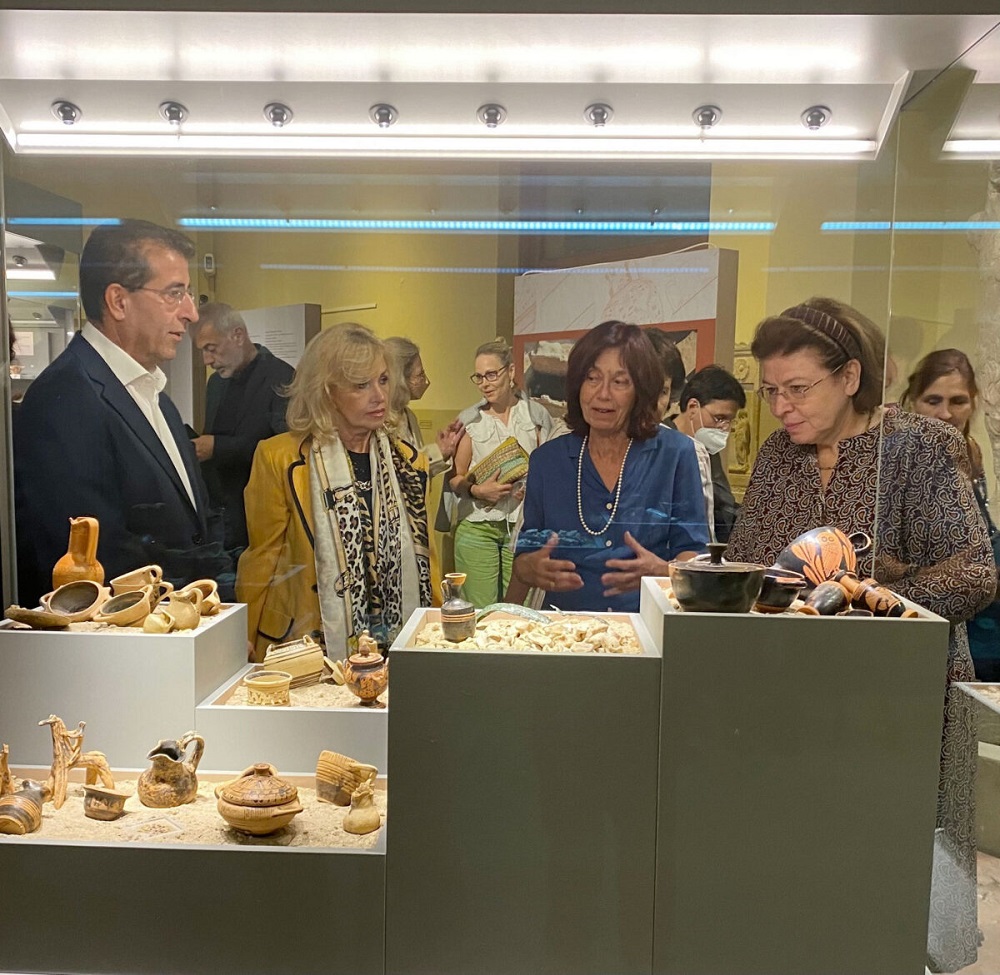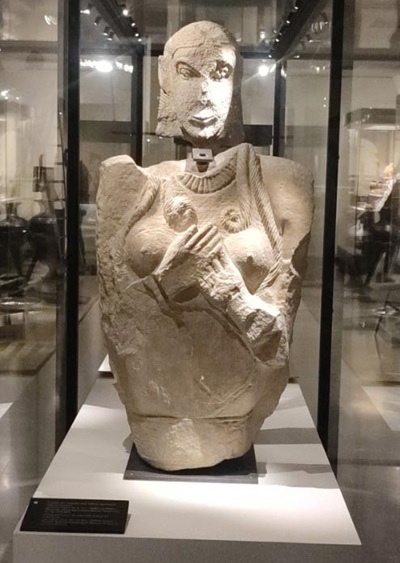
“Piraeus has an extremely important cultural heritage, a great comparative advantage, which highlights its physiognomy over time. Today, there is a dynamic in Piraeus, as the government is investing substantially in the city,” said Minister of Culture and Sports Lina Mendoni, who inaugurated the temporary exhibition “Falirothen. Between two worlds” at the Archaeological Museum of Piraeus, in the presence of Mayor Yannis Moralis . The exhibition presents some of the most important findings from the rescue excavation of the Stavros Niarchos Foundation Cultural Centre in Delta Faliro, and is part of the events for the European Heritage Days.
Lina Mendoni, referring to the city’s important heritage, stressed that “a tangible example is the findings of the Metro, because of which the largest archaeological excavation ever carried out in Piraeus, and indeed in the urban fabric of the city. From this project -as is always the case in public infrastructure projects implemented in our country- came many, prominent and varied findings, which, with the cooperation of the Ministry of Infrastructure and Transport and Attiko Metro, the Ministry of Culture and Sports and the Ephorate of Antiquities of Piraeus will present in the museum space of the wooden warehouse. As you already know, the establishment of the Museum of Maritime Antiquities in the building of Silo, in the harbour, is progressing. We are currently in the process of tendering, while the financing of the project, with a budget of around 90 million euros, is currently under way. eUR 1.5 billion has been secured from the Recovery Fund. Piraeus will acquire a museum of unique importance and scope. The entire archaeological wealth of Greece, which has never been exhibited, except for individual finds, will be presented in this museum. Also, the project of regeneration of the seafront, with a strong cultural character because of the cononeum wall, and this is being launched by the Municipality of Piraeus.” Regarding the report “Falirothen. Between two worlds”, the Minister noted that “the rescue excavation at the SNFCC, which was carried out in an absolutely systematic manner, linked and interpreted the earlier excavations in the same area and yielded findings, which complement the archaeological past of not only the wider area of Piraeus, but also the historical past of Athens and Attica”.
The exhibition is structured in 4 sections: the first two focus on Attic burial customs during the early and late Archaic period. They focus on the objects that accompanied the deceased, but also on those that were part of the ritual for the care of the deceased on his last journey. The third section is devoted to Early Attic pottery, while the fourth section presents three burials that have been examined from the point of view of bioarchaeology. That is, it presents the identity of the people who are buried and tells the story of their lives.
The first evidence for the existence of a cemetery in Delta Faliro is recorded as early as 1864, while at the beginning of the 20th century two -small-scale- excavations of a salvage nature were carried out by K. Kourouniotis (1911) and E. Pelekidis (1915). From the latter came the unorthodox – for the perceptions of the time – finding of the group burial of 18 adults, who were executed by blotting. The area was systematically excavated during the recent construction of the Stavros Niarchos Foundation Cultural Centre (SNFCC) on the site of the old racecourse.
The exhibition, which is curated by Stella Chrysoulaki, Head of the Piraeus Antiquities Ephorate, with the collaboration of archaeologists Ioannis Pappas, Dora Evangelou, Alexandra Syrogianni, Ekaterini Panagopoulou and Andromache Kapetanopoulou, will run until 31 December 2023.







Leave A Comment